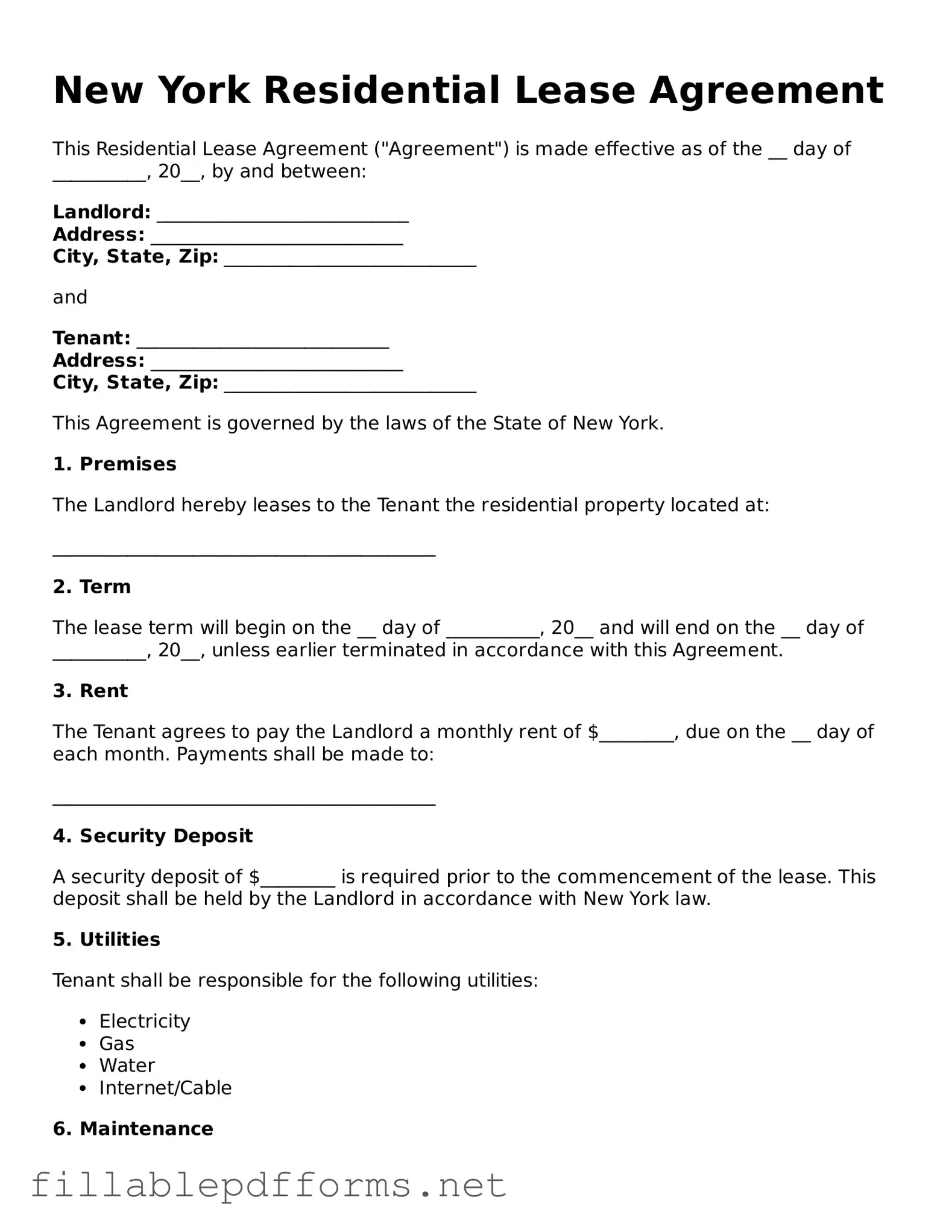Attorney-Verified Residential Lease Agreement Form for New York State
A New York Residential Lease Agreement is a legally binding document that outlines the terms and conditions between a landlord and a tenant for renting a residential property. This form specifies important details such as the rental amount, duration of the lease, and responsibilities of both parties. Understanding this agreement is essential for ensuring a smooth rental experience and protecting the rights of both landlords and tenants.
Launch Editor Here
